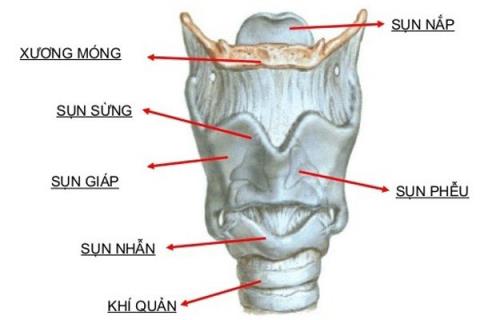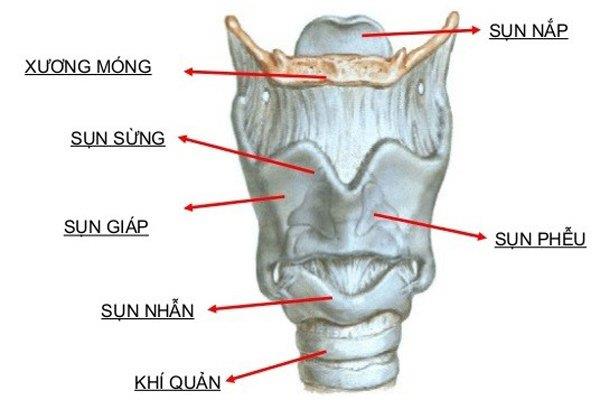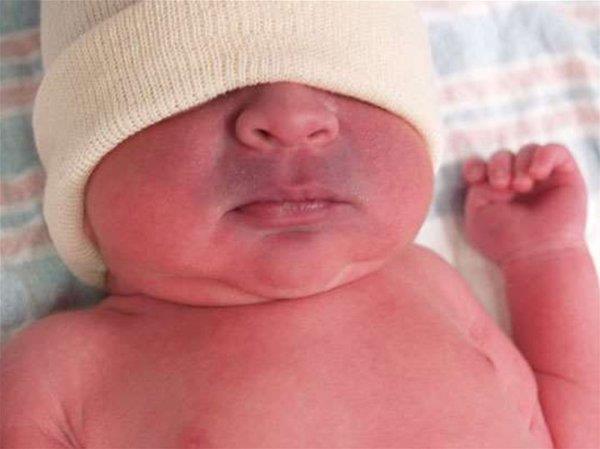Laryngeal cartilage softening and what you need to know

Laryngeal softening is a congenital abnormality of the laryngeal cartilage that causes the airways to narrow during inspiration and causes obstruction. It is the most common cause of congenital stridor and also the most common congenital anomaly of the larynx. In rare cases, it can cause a baby to lack oxygen and affect development. Even severe cases can be accompanied by gastroesophageal reflux and feeding problems. Therefore, this is an important health issue in neonatal patients that parents should have basic information. Let's learn the basic characteristics of soft laryngeal cartilage through the following article.
content
- 1. Laryngeal Anatomy
- 2. Cause
- 3. Manifestations of disease
- 4. How has this situation progressed?
- 5. Complications
- 6. When should parents take the baby to the hospital immediately?
- 7. Should surgery or not?
1. Laryngeal Anatomy
The larynx is located in front of the neck, connecting the pharynx to the trachea. The key role of the larynx is to protect the lower airways by abrupt closure to mechanical stimuli. In addition, the larynx also plays a role in producing voice, coughing, controlling ventilation ...
The structure of the larynx includes:
- 3 large, solitary cartilages: cricoid cartilage, thyroid cartilage, and flap cartilage.
- 3 pairs of smaller cartilages: funnel cartilage, horn cartilage, meniscus.

Laryngeal cartilage structure
2. Cause
This condition is thought to be due to delayed maturation of the supporting structures in the larynx. The laryngeal cartilages soften and prolapse into the larynx during inspiration. Of these, the most common is the flap cartilage or the funnel cartilage or both. This leads to an obstruction of the airways, causing a humming sound when inhaling.
Children with soft laryngeal cartilage are more prone to gastroesophageal reflux . This is because the baby has to create more negative pressure in the chest to get through the airway obstruction. Conversely, children with reflux may have features resembling laryngeal softening due to the effects of refluxed fluid.

Breathing in normal children and children with soft laryngeal cartilage
3. Manifestations of disease
Typically, infants with this abnormality begin to make inspiratory sounds during the first 2 months of life, typically starting at 4-6 weeks of age, but can also be as late as 2-3 months. This sound increases when the baby is lying on his back, during sleep, while eating... However, the baby's cry is still normal. Difficulty suckling is not noted in most cases, although choking or coughing may occasionally occur while feeding.
Other accompanying symptoms include:
- Difficult to feed.
- Choking while feeding.
- Poor weight gain.
- Stop breathing .
- Pull in the neck or chest with each breath.
- Cyanosis.
- Gastroesophageal reflux: vomiting, regurgitation…
4. How has this situation progressed?
In more than 90% of cases, treatment takes time and the damage will gradually improve. Therefore, most inhalation sounds should disappear by the time the child is 2 years old. During the first 6 months, the sound seems to increase as the inhaled airflow increases with age. After this period of time, the noise gradually disappears. Sometimes the sound will recur during sports or respiratory infections.
If the baby has a normal cry, normal weight gain, and little increase in stridor during the first 2 months, no further work is needed to make the diagnosis. Some children present with hypoxemia, which can lead to pulmonary hypertension. The child should be given oxygen in these cases.
5. Complications
- Hypoxemia, need to provide oxygen.
- Alveolar hypoventilation requires surgery or positive pressure ventilation.
- Stop breathing.
- Increased risk of gastroesophageal reflux.
- Pulmonary hypertension.
6. When should parents take the baby to the hospital immediately?
- Stop breathing for more than 10 seconds.
- Lips turn blue when the baby breathes loudly.
- The child pulls in the neck after being repositioned or awakened.

If the lips turn blue when breathing, the child should see a doctor
7. Should surgery or not?
In severe cases, soft cartilage in the larynx can affect breathing, making it difficult for children to eat, grow and develop. Surgical intervention in these pediatric patients is necessary.
As mentioned above, the remaining 10% of severe pediatric patients need intervention, the possible causes are:
- Can't breastfeed.
- Hypercapnia or significant hypoxia.
- Sleep apnea due to severe congestion.
- Pulmonary hypertension .
- Cardiopulmonary disease.
Laryngeal softening is a disease with a very good prognosis in most cases. However, the disease can also lead to complications that seriously affect children. Parents need to know the progress and signs of when to take the child to the doctor to be able to provide supportive treatment as well as timely surgery in severe cases. When detecting abnormalities in their children, parents should take them to medical facilities for effective diagnosis and treatment.
Doctor Nguyen Le Vu Hoang